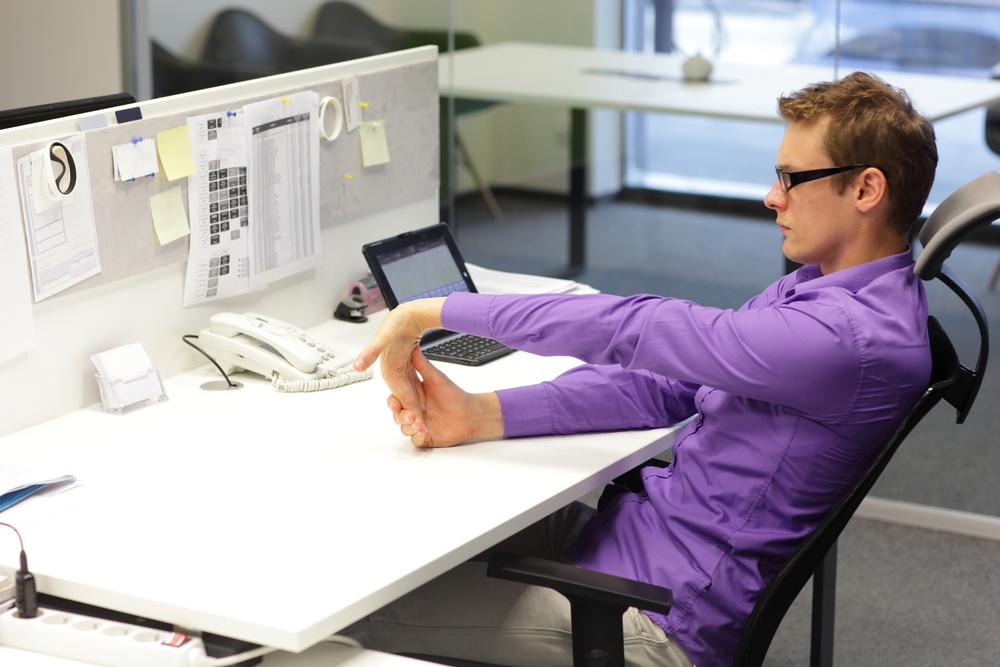Elevate Your Office Routine: Comprehensive Guide to Staying Fit at Your Desk
This comprehensive guide offers practical tips and exercises for staying active at your desk to combat the health risks of prolonged sitting. From deep squats to walking lunges and torso twists, learn how small daily movements can boost your fitness, improve posture, and enhance overall wellness—all without leaving your workspace. Incorporate these simple routines into your daily schedule to stay energized and healthy despite a sedentary job.

Elevate Your Office Routine: Comprehensive Guide to Staying Fit at Your Desk
Prolonged sitting can pose serious health risks, including increased chances of obesity, cardiovascular disease, and muscular issues. Implementing simple yet effective exercises into your daily routine can significantly mitigate these negative effects and promote overall wellness.
If you're someone who spends most of the day confined to a desk, behind a computer, or stuck in traffic, you're not alone. Modern lifestyles often limit physical activity, leading to a sedentary existence that can adversely affect your health. Fortunately, incorporating targeted exercises throughout your day can help maintain muscle tone, improve circulation, and boost energy levels without requiring extensive time or special equipment.
Why Staying Active at Your Desk is Crucial
Sedentary behavior has been linked to a multitude of health issues, including increased blood pressure, poor posture, weak muscles, and decreased metabolic rate. When we sit for long periods, our muscles become stiff, our circulation slows, and our mental alertness decreases. Regular movement, even in brief intervals, can reverse or reduce these impacts effectively.
Research shows that incorporating physical activity into a sedentary routine can lead to improved posture, enhanced mood, and increased productivity. It doesn't require a gym membership or significant time investment, just a commitment to integrating simple exercises into your workday.
Top Desk Exercises to Keep You Active
Here are effective exercises you can do at your desk or in a small office space that will help you stay active and healthy:
1. Deep Squat for Lower Body Strength
The deep squat is a fundamental exercise that strengthens your thighs, hips, and buttocks while boosting flexibility and mobility. Historically, many people thought deep squats were risky, but current evidence shows that when performed correctly, they are safe and highly beneficial.
Stand with your feet shoulder-width apart, keeping your chest lifted and shoulders back. Imagine sitting back into a chair—bend your knees and hips to lower your body, ensuring your knees track over your toes. Keep your heels flat on the floor and your core engaged. Lower your body until your thighs are parallel to the floor or your calves touch your hamstrings for an added stretch. Then, push through your heels to return to standing position.
Remember to avoid overextending your knees or leaning forward excessively. Performing 10-15 repetitions every few hours can help reduce stiffness and increase blood flow to your legs and hips.
2. Walking Lunges for Leg and Core Activation
An excellent exercise mimicking natural walking, walking lunges strengthen each leg independently, reducing muscle imbalance and promoting functional movement.
Begin by standing upright with feet hip-width apart. Step forward with your left foot, placing it firmly on the ground as if on train tracks. Lower the body by bending the knees to approximately 90 degrees, keeping your right knee just above the ground, not touching it. As you push off your left foot, swing your right leg forward into a lunge position, and repeat on the other side.
Maintain upright posture, keeping your chest lifted and core tight. Perform 10-12 lunges per leg, pausing briefly between each to ensure control and proper form. This move helps develop balance, stability, and strength in your legs and hips.
3. Bends and Twists for Flexibility and Core Strength
Focusing on bending and twisting movements can improve spinal mobility, strengthen core muscles, and prevent injuries—especially important for those who sit for long periods.
Stand tall, holding lightweight objects like a small ball or even just your hands. Keep your back straight, engage your core, and gently rotate your torso to one side, lowering your hands or weight toward outside your thigh or calf. Keep your hips stable, and ensure your knees are slightly bent. Switch sides, alternating the twists to target different muscle groups.
This exercise mimics natural motions and helps keep your spine mobile and your core engaged. If you experience any back discomfort, perform without weight initially until your muscles adapt.
Additional Tips for an Active Workday
Beyond these exercises, take short breaks every 30-60 minutes to stand, stretch, or walk around. Using a standing desk or adjustable workstation can also help reduce static sitting time. Incorporate easy stretching routines, such as shoulder rolls, neck stretches, and arm flexes, to relieve tension and improve circulation throughout the day.
Remember, consistency is key. Even five-minute activities intermittently scattered during the day can accumulate into a healthful exercise habit, contributing to better posture, increased energy, and overall wellness.
Conclusion
Living a sedentary lifestyle doesn't mean you have to compromise your health. Simple, effective exercises like deep squats, walking lunges, and torso twists can make a significant difference in maintaining strength, flexibility, and overall health amid a busy desk job. Prioritize movement, stay active, and watch your physical and mental well-being improve steadily.





